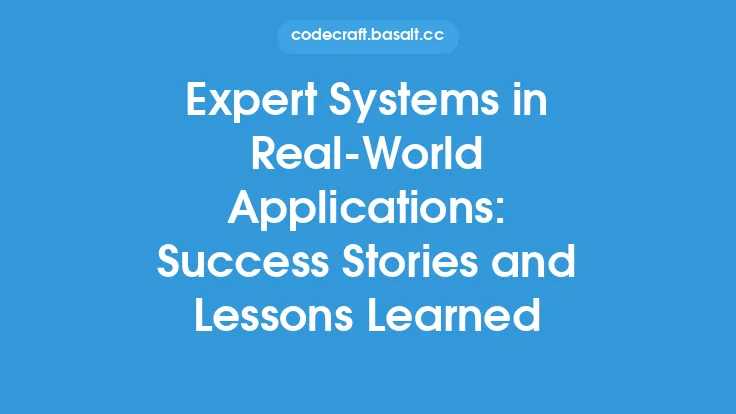Clustering is a fundamental concept in machine learning that involves grouping similar data points or observations into clusters. This technique has numerous applications in real-world scenarios, where it can be used to identify patterns, relationships, and structures within complex data sets. In this article, we will explore various use cases and examples of clustering in different domains, highlighting its significance and versatility.
Introduction to Clustering Applications
Clustering has a wide range of applications across various industries, including marketing, healthcare, finance, and customer service. One of the primary reasons for its widespread adoption is its ability to uncover hidden patterns and relationships within large data sets. By grouping similar data points together, clustering enables organizations to gain valuable insights into their customers, products, and services, ultimately informing strategic business decisions. For instance, clustering can be used to segment customers based on their demographics, behavior, and preferences, allowing companies to tailor their marketing campaigns and improve customer engagement.
Clustering in Marketing and Customer Segmentation
In marketing, clustering is used to segment customers into distinct groups based on their characteristics, behavior, and preferences. This enables companies to develop targeted marketing campaigns, improve customer engagement, and increase sales. For example, a company like Amazon can use clustering to segment its customers based on their purchase history, browsing behavior, and search queries. By doing so, Amazon can recommend products that are likely to be of interest to each customer, enhancing their overall shopping experience. Clustering can also be used to identify customer churn, allowing companies to take proactive measures to retain their customers and reduce turnover.
Clustering in Healthcare and Medical Research
Clustering has numerous applications in healthcare and medical research, where it can be used to identify patterns and relationships within large medical data sets. For instance, clustering can be used to group patients with similar symptoms, medical histories, and treatment outcomes, enabling healthcare professionals to develop more effective treatment plans. Clustering can also be used to identify high-risk patients, allowing healthcare providers to take proactive measures to prevent hospital readmissions and improve patient outcomes. Additionally, clustering can be used to analyze genomic data, identifying patterns and relationships that can inform the development of personalized medicine and targeted therapies.
Clustering in Finance and Risk Management
In finance, clustering is used to identify patterns and relationships within large financial data sets, enabling organizations to manage risk, detect anomalies, and make informed investment decisions. For example, clustering can be used to group stocks with similar characteristics, such as industry, market capitalization, and volatility, allowing investors to develop diversified portfolios and minimize risk. Clustering can also be used to detect credit card fraud, identifying patterns of behavior that are indicative of fraudulent activity. Additionally, clustering can be used to analyze customer transaction data, enabling banks and financial institutions to develop targeted marketing campaigns and improve customer engagement.
Clustering in Image and Video Analysis
Clustering has numerous applications in image and video analysis, where it can be used to segment images, detect objects, and track motion. For instance, clustering can be used to segment medical images, such as MRI and CT scans, enabling healthcare professionals to identify tumors, fractures, and other abnormalities. Clustering can also be used to detect objects in images, such as faces, pedestrians, and vehicles, allowing for the development of autonomous vehicles and surveillance systems. Additionally, clustering can be used to track motion in videos, enabling the analysis of complex behaviors and activities, such as sports and dance.
Clustering in Network Analysis and Cybersecurity
Clustering has numerous applications in network analysis and cybersecurity, where it can be used to identify patterns and relationships within large network data sets. For example, clustering can be used to group nodes with similar characteristics, such as IP addresses, ports, and protocols, allowing network administrators to identify potential security threats and vulnerabilities. Clustering can also be used to detect anomalies in network traffic, identifying patterns of behavior that are indicative of malicious activity. Additionally, clustering can be used to analyze social networks, enabling the identification of influential individuals and communities, and informing the development of targeted marketing campaigns and public health interventions.
Clustering in Geospatial Analysis and Urban Planning
Clustering has numerous applications in geospatial analysis and urban planning, where it can be used to identify patterns and relationships within large spatial data sets. For instance, clustering can be used to group locations with similar characteristics, such as demographics, land use, and transportation infrastructure, allowing urban planners to develop more effective zoning regulations and transportation systems. Clustering can also be used to analyze crime patterns, identifying areas with high crime rates and informing the development of targeted law enforcement strategies. Additionally, clustering can be used to analyze environmental data, such as air and water quality, enabling the identification of areas with high levels of pollution and informing the development of targeted environmental interventions.
Conclusion
Clustering is a powerful technique in machine learning that has numerous applications in real-world scenarios. By grouping similar data points together, clustering enables organizations to gain valuable insights into their customers, products, and services, ultimately informing strategic business decisions. From marketing and customer segmentation to healthcare and medical research, finance and risk management, image and video analysis, network analysis and cybersecurity, and geospatial analysis and urban planning, clustering has the potential to drive innovation and improvement in a wide range of domains. As the amount of data continues to grow, clustering is likely to play an increasingly important role in helping organizations to extract insights and meaning from complex data sets, and to make more informed decisions.





